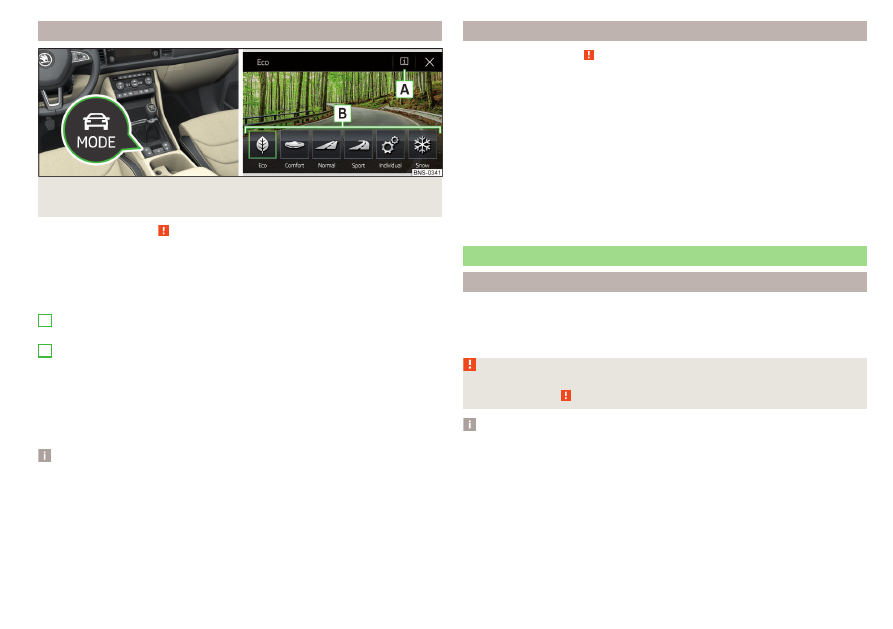Skoda Kodiaq (2019 year). Manual - part 16

Mode selection and Infotainment display
Fig. 308 Button for selecting the driving mode / Display in Infotainment
screen
Read and observe on page 251 first.
Display of the driving mode menu
›
Press the
The following function surfaces are displayed on the Infotainment screen
.
Information on setting the currently selected mode
Setting the Individual mode
Driving mode menu
The driving mode selection is performed in one of the following ways.
▶
By repeatedly pressing the button .
▶
By tapping the relevant function surface on the Infotainment screen
After switching the ignition off and on, the Normal mode is set.
Note
■
The currently selected driving mode is displayed in the infotainment system
in the status bar next to the symbol .
■
The setting for the individual mode is stored in the active personalisation user
account
.
A
B
Settings for individualmode
Read and observe on page 251 first.
In the Individual mode, the following menu items can be set.
■
DCC: - Sets the shock characteristics
■
Steering: - Set the power steering characteristics
■
Drive: - Sets the drive characteristics
■
ACC: - sets the vehicle acceleration when adaptive cruise control is activated
■
Dynamic Cornering light: - Sets the Full LED headlight characteristics
■
Air conditioning: - Sets the Climatronic characteristics
■
Engine sound: - Sets the engine noise in the vehicle
■
Reset mode - Setting for all menu items in Individual mode to Normal
■
Cancel - Keep the current settings
■
Reset - cancels all menu items in the Normal mode
Proactive occupant protection (Crew Protect Assist)
Introduction
ProActive passenger protection (following known as system) increases pas-
senger protection in the front seats in situations that could lead to vehicle im-
pact or overturning.
WARNING
Please take note of the general points relating to the use of assistance sys-
tems
Note
The system component service life is monitored electronically. Further infor-
mation
253
Assist systems